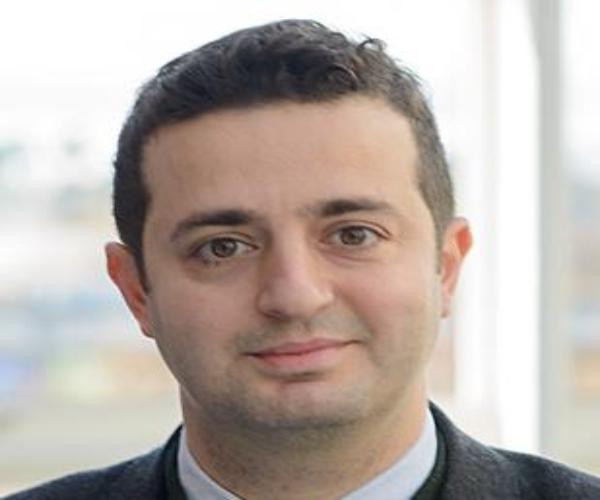Repairing children’s skull injuries with 3D resorbable magnesium implants
Friday, 28 July, 2023
Dr Mert Celikin is an Assistant Professor at the School of Mechanical and Materials Engineering at University College Dublin. A metals specialist, Dr Celikin and his research team are working on a Marie Sklodowska Curie project developing biodegradable magnesium implants for paediatric cranial applications. He has also received SFI funding for follow-up research.

According to London’s Great Ormond Street Hospital, most skull fractures in children happen “when children are playing”, like falls from playground equipment.
Surgery may be needed for a serious fracture if the bones have moved or there are any fragments.
Dr Mert Celikin is looking at alternatives to the traditional use of titanium plates and screws in paediatric craniofacial surgeries.
Specifically, he is looking at using magnesium, a lighter metal with the added advantage of being biodegradable, meaning its plates, screws and implants dissolve in the body over time. This makes them a promising substitute for permanent implants.
“Titanium is a very stable metal that can stay permanently if you do not remove it. But once the bone is healed, you don't really need those implants to stay there and they have to be removed by a secondary operation.”
Hardware removal is one of the most common procedures performed worldwide and can be costly, painful and present additional risks. But leaving an orthopaedic implant in the body can also pose potential risks of infection or other long-term failure.
“With biomedical magnesium implants, we can remove the necessity of this extra operation, which is a very important advantage. And in this project, we are also focusing on paediatric patients, and the kids’ bodies are still growing so the conventional implants cannot grow with the body. So once we can actually use the biodegradable implants, they will be more crucial for this patient population.”
His project has ambitions beyond simply creating magnesium plates and screws.
“We are trying to implement 3D printing technology to design specific implants for next generation cranial implants.”
Using 3D technology, the child’s skull will be scanned at the hospital and a 3D implant custom-made for their particular injury or need.
“One of the additional advantages is we are not using these high-temperature, manufacturing 3D printers which cost a million euros. We are trying to use desktop 3D printers like everyone uses for polymers,” he says, of the flexible plastic used in more affordable 3D printing machines.
“What we are trying to do is mix these metals with the polymers and then with the post-processing we can remove the polymers and make those particles of metal stick together.”
This 3D implant will then be used to heal the child’s craniofacial injury. Once the bones are fixed, they no longer need the implant, which will have, conveniently, biodegraded.
Dr Celikin says there are ways of ensuring that the implant lasts until the child’s bone has healed; but how long does it take for magnesium to be reabsorbed into the body?
“It depends on the composition of the metal. Magnesium has many different compositions. Conventional magnesium alloys can degrade very fast and that's one of the problems that we are tackling with uncontrolled biodegradation rate and poor mechanical performance. But there are techniques to overcome these difficulties and once they are overcome, we can ensure that the bone is fixed before an implant degrades. With advanced coating technologies we can create very stable oxide barriers which prolong degradation time. The major element is the magnesium, but we can add additional elements that are already present in our bodies. Those elements can form a stable oxide layer and that can also prolong the degradation process.”
He accepts that when people hear there is going to be a “foreign object” in their bodies - particularly in their children’s bodies - they are understandably concerned. But magnesium occurs naturally in the body, with more than half of it stored in our bones.
“Not only is magnesium not toxic, it is also beneficial for people. There are magnesium supplements because it is beneficial for muscle function, the nervous system and energy creation. In our diets we get magnesium from avocado, seeds, dark chocolate.”
Is there any danger of having too much magnesium in our bodies as the implant dissolves?
“We don't want an excessive amount of magnesium. There's always a limit. So if there is an excessive amount we need to reduce it because it might have side effects,” he says - and these include nausea and abdominal cramping. “That's why a controlled amount of degradation is the key.”
He says you can “clearly see” magnesium implants on x-rays, allowing for the careful monitoring of their degradation.
Certainly there is a market for magnesium implants, with some two million craniofacial surgeries carried out worldwide each year.
“Cranial defects can be overcome not only by using artificial implants, but also bone grafts. Cranial defects are caused by trauma, accidents, violence and also tumours that not only affect the brain but also the skull. So the surgeon has to remove it and replace it with an artificial or an organic implant.”
Magnesium implants are already used in hospital settings in some orthopaedic and cardiovascular applications.
“But for cranial applications it is still very new. It's still at the research stage even though there are a few examples that have shown promise.”
He is excited by the extraordinary potential of orthopaedic implants in the biomedical field.
“I’m listening to podcasts from different surgeons all over the world and now what they are trying to do is put some medicine and sensors into these implants to heal the patient, controlling from outside. So, in-situ healing. I think those are the implants of the future.”
Listen to the (opens in a new window)podcast.
This article was originally published on 25th January 2023.